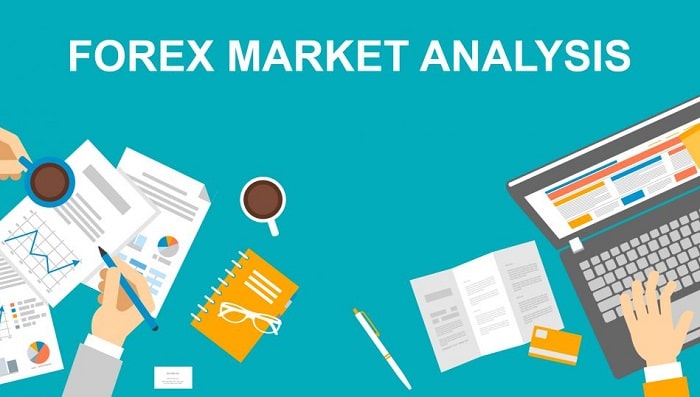Forex market analysis unlocks the intricacies of the world’s largest financial market, empowering traders with the knowledge to navigate its complexities. This comprehensive guide delves into the essential concepts, techniques, and strategies that drive successful forex trading.
Forex market analysis involves studying various factors to forecast price movements. By identifying trends and patterns, traders can make informed decisions. Forex volatility trading focuses on exploiting periods of high price fluctuations, utilizing strategies like straddles and strangles.

Understanding volatility patterns through market analysis is crucial for successful volatility trading, allowing traders to identify potential opportunities and manage risk effectively.
As we embark on this journey, we’ll explore the fundamental principles of forex, delve into the nuances of technical and quantitative analysis, and unravel the impact of economic indicators and events.
We’ll decipher the dynamics of currency pairs and cross-rates, equipping you with the tools to make informed trading decisions.
Forex Market Overview
The foreign exchange (forex) market is the global decentralized marketplace where currencies are traded. It’s the largest and most liquid financial market in the world, with a daily trading volume exceeding $6.6 trillion.
The forex market plays a crucial role in international trade and investment, facilitating the exchange of currencies to enable cross-border transactions.
It allows businesses, individuals, and governments to convert their currencies into other currencies for various purposes, such as importing goods, investing abroad, or traveling.
Major Participants in the Forex Market
Commercial banks: Act as intermediaries between buyers and sellers of currencies, facilitating currency conversions for their clients.
Central banks: Manage their countries’ monetary policies and intervene in the forex market to influence exchange rates.
Hedge funds: Actively trade currencies to generate profits, often using sophisticated trading strategies.
Institutional investors: Include pension funds, mutual funds, and insurance companies that invest in foreign currencies to diversify their portfolios.
Retail traders: Individuals who trade currencies independently, often through online platforms or brokers.
Market Analysis Techniques
Fundamental Analysis
Fundamental analysis involves examining economic and political factors that influence currency values. It focuses on macroeconomic indicators, such as GDP growth, inflation, interest rates, and government policies, to assess the underlying strength of a country’s economy.
Forex market analysis involves studying price movements and identifying patterns to make informed trading decisions. One essential aspect of this analysis is understanding Forex trend lines , which connect a series of price highs or lows to predict future price movements.
By incorporating trend lines into their analysis, traders can gain valuable insights into market direction and make more strategic trading decisions.
Technical Analysis
Technical analysis relies on historical price data to identify trends and patterns in the forex market. It uses charts and technical indicators, such as moving averages, support and resistance levels, and candlestick patterns, to predict future price movements.
Quantitative Analysis
Quantitative analysis employs statistical models and mathematical techniques to analyze forex market data. It involves using econometric models, time series analysis, and machine learning algorithms to forecast currency exchange rates.
Economic Indicators and Events
Major Economic Indicators
GDP growth: Measures the growth rate of a country’s economy.
Inflation: The rate at which prices of goods and services increase over time.
Interest rates: Set by central banks, they influence the cost of borrowing and investment.
Unemployment rate: The percentage of the labor force that is unemployed.
Consumer confidence index: Measures the level of optimism among consumers.
Economic Events
Interest rate decisions: Changes in interest rates by central banks can significantly impact currency values.
GDP reports: Provide insights into the economic growth of a country.
Employment reports: Reveal the state of the labor market and can affect currency exchange rates.
Political events: Elections, referendums, and changes in government can influence the economic outlook and currency values.
Economic Calendars
Economic calendars provide a schedule of upcoming economic events and data releases. Traders use these calendars to stay informed and prepare for potential market movements.
Currency Pairs and Cross-Rates
Major Currency Pairs, Forex market analysis
- EUR/USD (Euro/US dollar): The most traded currency pair, known as the “eurodollar.”
- USD/JPY (US dollar/Japanese yen): A major currency pair representing the world’s largest economy and a safe-haven currency.
- GBP/USD (British pound/US dollar): Reflects the economic relationship between the UK and the US.
- USD/CHF (US dollar/Swiss franc): A currency pair often used in safe-haven trades.
- AUD/USD (Australian dollar/US dollar): A currency pair influenced by the Australian economy and commodity prices.
Cross-Rates
Cross-rates are exchange rates between two currencies that are not directly traded against each other. They are calculated by using the exchange rates of the two currencies against a common currency, usually the US dollar.
Factors Affecting Exchange Rates
- Interest rate differentials: Differences in interest rates between countries can attract or deter capital flows, influencing currency values.
- Economic growth: Strong economic growth can make a currency more attractive, leading to appreciation.
- Political stability: Political instability or uncertainty can weaken a currency.
- Inflation: High inflation can erode the value of a currency, leading to depreciation.
- Supply and demand: Changes in the supply and demand for a currency can affect its exchange rate.
Risk Management and Trading Strategies: Forex Market Analysis
Importance of Risk Management
Risk management is crucial in forex trading to protect capital and minimize losses. It involves setting stop-loss orders, determining appropriate position sizes, and managing leverage.
Common Risk Management Strategies
- Stop-loss orders: Automatic orders that trigger a trade closure when the price reaches a predetermined level, limiting potential losses.
- Position sizing: Determining the amount of capital to allocate to each trade based on risk tolerance and account size.
- Leverage: Using borrowed funds to increase trading exposure, which can amplify both profits and losses.
Trading Strategies
- Scalping: A short-term trading strategy that involves taking small profits on rapid price movements.
- Day trading: Closing all trades within the same trading day, aiming to capture intraday price fluctuations.
- Swing trading: Holding trades for several days or weeks, focusing on capturing larger price swings.
Forex Market Data and Tools
Data Sources
- Forex brokers: Provide real-time currency quotes, charts, and market news.
- Central banks: Publish economic data and interest rate decisions that impact currency values.
- News agencies: Report on economic events and political developments that affect the forex market.
- Financial data providers: Offer comprehensive market data, including historical prices, technical indicators, and economic calendars.
Charts and Technical Indicators
Charts display historical price data and are used for technical analysis. Technical indicators, such as moving averages, support and resistance levels, and oscillators, help identify trends and patterns.
Trading Platforms

Trading platforms provide a user interface for executing trades, managing positions, and accessing market data. They offer features such as charting tools, order management, and risk management tools.
News and Sentiment Analysis
News and sentiment analysis involves monitoring market news and social media feeds to gauge market sentiment and identify potential trading opportunities.
Concluding Remarks
Forex market analysis is an ever-evolving discipline, requiring traders to stay abreast of the latest market trends and developments. By mastering the techniques Artikeld in this guide, you’ll gain a competitive edge in the dynamic world of forex trading.
Remember, successful forex trading is not merely about predicting the future but about managing risk and capitalizing on opportunities. With a deep understanding of market dynamics and a disciplined approach, you can navigate the complexities of forex and achieve your financial goals.
Forex market analysis provides traders with insights into market trends and potential opportunities. However, it’s crucial to complement this analysis with effective Forex risk management strategies. By understanding the risks involved in currency trading and implementing measures to mitigate them, traders can protect their capital and enhance their overall trading performance.
Forex market analysis remains a vital tool for informed decision-making, but it should always be considered in conjunction with a robust risk management framework.
FAQ Summary
What is forex market analysis?
Forex market analysis involves studying economic, political, and technical factors to forecast currency price movements and make informed trading decisions.
What are the main types of forex market analysis?
The three main types of forex market analysis are fundamental analysis, technical analysis, and quantitative analysis.
What are some common risk management strategies in forex trading?
Common risk management strategies include stop-loss orders, position sizing, and hedging.
What is the importance of economic indicators in forex market analysis?
Economic indicators provide valuable insights into the health of economies and can significantly impact currency values.
What is the difference between a currency pair and a cross-rate?
A currency pair represents the exchange rate between two currencies, while a cross-rate is the exchange rate between two currencies that are not directly paired.




